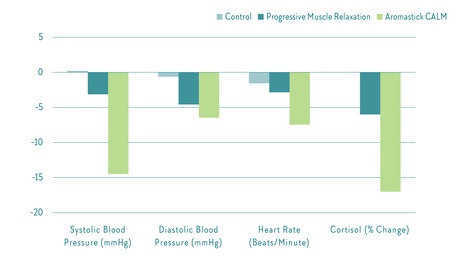Schneider, R. (2016). There is something in the air: Testing the efficacy of a new olfactory stress relief method (AromaStick®). Stress & Health, 32, 411-426. doi.org/10.1002/smi.2636
Background: In recent years, aromatherapy has become increasingly popular for clinical treatment and therapeutic management of both acute and chronic stress. It targets distinct and unique neurobiological characteristics of the olfactory system, which is tightly linked to emotions and information processing as well as the autonomous nervous system. Yet, depending on the mode of application, aromatherapeutic interventions show varying degrees of therapeutic effectiveness.
Objective: To test in a series of experiments the effects of a natural nasal inhaler on measurable physiological and psychological parameters and compare them to popular alternative methods.
Method: Five different studies involving 222 women and 78 men tested a number of boundary conditions using randomised, blind, placebo-controlled study designs.
Results: The application of the inhaler showed consistent and large physiological and psychological effects. It clearly outperformed other stress management techniques, like progressive muscle relaxation, Bach flowers or passive resting periods (natural control). The observed effects of scents from the inhaler were about 300% larger then when diffused in the room.
Conclusion: The effects occurred shortly after very few inhalations, drastically reduced stress related biomarkers (i.e. blood pressure, heart rate and cortisol) and considerably enhanced well-being. Users also benefited from the use of the inhalers over a 30 day period.

